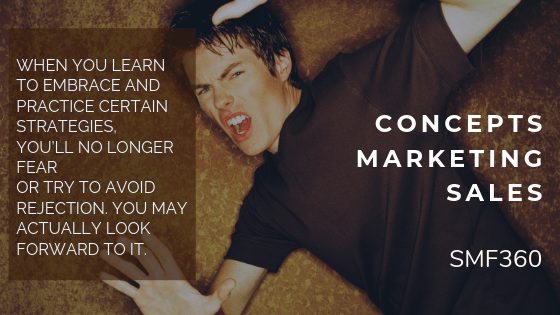An email to a friend
CONCEPTS
Over the last 15 years I often meet with customers and suppliers about concepts that must be well defined, Jennifer, the purpose of this document is to help you get the concepts well into your organisation as I often find that we confuse apples with oranges.
I founded SMF360 to help small business grow and transfer the sales knowledge tools and processes of the large companies like Konica and Siemens to the small businesses, I know many people always say Max wait a minute it works for Siemens and Konica but it does not apply to my business, we have not got the money they have, well ladies andgentlemen all the successful companies today that grow have something in common; speed, sustainability and growth, with today’s technologies, speed and prices you can compete against Siemens, Microsoft, Apple, and even Amazon organizations and people do it everyday.
MARKETING:
So I will start with Marketing, it is the ability to identify the needs and wants of a particular company or people and supply them profitable.
Marketing Channels
A marketing channel is the people, organizations, and activities necessary to transfer the ownership of goods from the point of production to the point of consumption. It is the way products get to the end-user, the consumer; and is also known as a distribution channel, e.g Phone, Events, Web Page, Office, Social Media, People, e-mails, etc.
“Become the person who would attract the results you seek.”
What are the 7 elements of marketing?
Seven elements used in marketing mix for service are as follows: …
Marketing Mix:
- Product: …
- Price: …
- Place: …
- Promotion: …
- People: …
- Physical Evidence: …
- Process:
SALES
Take a moment to think about what the word ”selling” means to you. Every time I ask sales executives to define ”selling,” I get answers like these:
Selling is a process of persuasion to get a prospect to take action.
Selling is finding a need and filling that need.
Selling is an exchange of goods or services for money.
Selling is walking the road of agreement with the customer.
Selling is an art.
Selling is a science.
Selling is a transaction.
Selling is relationship building.
Selling is a consultative process.
Selling is hustling.
Selling is all about trust.
“Don’t watch the clock; do what it does.
There are as many definitions of selling as there are stars in the sky. Everyone has a different definition of the word “selling.”
Once You Define Anything, Your Definition Will Define You
What’s important in this conversation? Once you define what selling is, the definition will influence how you sell. If you believe that selling is an art, then you will try to grow your art, and chances are that you will try to find creative ways to overcome all obstacles that stand in the way of the sale. If you define selling as a science, then you will try to deploy more scientific tools to achieve greater sales. If you believe that selling is all about relationships, chances are that you will focus more on establishing a meaningful emotional and cognitive connection with your prospect.
Jennifer, I am sure you agree with all above, now we have that clear, lets move into more details about sales. leads, contacts, accounts, opportunities.
Types of Sales
Here are 7 different types of sales roles explained.
- Inside Sales. As an inside sales rep, you would be responsible for maintaining existing client relationships. …
- Outside Sales. …
- Sales Support. …
- Client Services. …
- Lead Generation/Development. …
- Business Development Managers. …
- Account Managers.
The 8-Step Sales Process
- Step 1: Prospecting. Before you can sell anything, you need someone to sell to. …
- Step 2: Connecting. …
- Step 3: Qualifying. …
- Step 4: Demonstrating Value. …
- Step 5: Addressing Objections. …
- Step 6: Closing the Deal. …
- Step 7: Onboarding. …
- Step 8: Following Up.
THE SIX-STEP SELLING CYCLE
- Prospect for your next potential client or customer. Prospecting means finding the right potential buyer for what you’re selling. …
- Make initial contact. …
- Qualify the prospective clients or customers. …
- Win over the prospects with your presentation. …
- Address the prospective client’s or customer’s concerns. …
- Close the sale.
Types of Salespersons
- Inside Order Takers. Retail sales assistants are typical inside order takers. …
- Delivery Salespeople. Delivery salespeople are primarily concerned with delivering the product. …
- Outside Order Takers. …
- Missionary Salespeople. …
- Order Getters.
Sales are activities related to selling or the number of goods or services sold in a given time period. WIKIPIDEA – Most have a close date ! I often get asked why? Because as Wikipidea states a period must be defined.
LEAD
A sales lead is a potential sales contact, individual or organization that expresses an interest in your goods or services. Leads are typically obtained through the referral of an existing customer or through a direct response to advertising or publicity.
Qualifying is the process that allows you to find out whether a lead is actually a prospect. A prospect is someone who has the potential to become a customer.Leads, on the other hand, are just potential prospects. If you don’t qualify a lead, you may be wasting your time with someone who literally can’t buy from you.
How to Generate Sales Leads in Your Small Medium Business
- Identify Your Target Audience. The first step of lead generation is identifying your target audience. …
- Pick Your Promotional Methods Wisely. …
- Create a Sales Funnel. …
- Use an Email Newsletter to Build Relationships. …
- Leverage Social Media to Connect and Engage.
OPPORTUNITY
A sales opportunity is a contact or an account which has been qualified. This person has entered into your sales cycle and is committed to working with you. You have already contacted, called or met him and know their needs or requirements.
What identify sales opportunities?
One of the most important things about sales opportunities is being able to identify them in all situations. As many sales teams know, just because someone is interested in the product or service you are offering them, doesn’t necessarily mean that they are ready to commit to the purchase.
What is the difference between lead and opportunity?
Simply put, a sales opportunity is a qualified sales lead. This means an opportunity is also an object which represents a potential deal, but this specific deal has met certain criteria which indicate a high value to the business, or a high probability of closing.
5 Steps to Identify Sales-Ready Opportunities
- Step 1) Identify Sources of Customer Activity Data and Start Monitoring Them. …
- Step 2) Analyze Your Customer Activity Data and Build a Profile. …in your CRM
- Step 3) Review Purchase History and Budget. …
- Step 4) Review Current Events. …in your CRM
- Step 5) Still Not Sure? Shoot yourself.
6 Steps for Developing Sales Opportunities
- Have a goal in mind. If you don’t know why you’re talking with a customer, the conversation will probably be a waste of time: yours and the customer’s. …
- Do some quick research. …
- Plan the conversation. …
- Take good notes. … In your CRM
- Close on next steps. …in your CRM
- Document the conversation in Your CRM
Amazon’s weakness is in its greatness. It has everything for sale. Amazon can’t be good at everything, They don’t do content marketing very well at all. They don’t even do email marketing that great! , so my point at the beginning, you can compete with Amazon.
Hope this clears a few important concepts, Jennifer if you have any concepts questions please let me know.
Regards
Max
+1 786 498 4920











